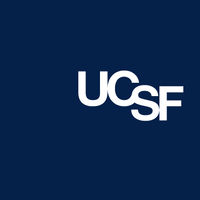预约演示
更新于:2025-10-23
DB-OTO
更新于:2025-10-23
概要
基本信息
非在研机构- |
最高研发阶段临床1/2期 |
首次获批日期- |
最高研发阶段(中国)- |
特殊审评快速通道 (美国)、孤儿药 (美国)、罕见儿科疾病 (美国)、孤儿药 (欧盟)、再生医学先进疗法 (美国) |
登录后查看时间轴
关联
1
项与 DB-OTO 相关的临床试验NCT05788536
A PHASE 1/2, OPEN-LABEL, MULTICENTER TRIAL WITH A SINGLE ASCENDING DOSE COHORT WITH UNILATERAL INTRACOCHLEAR INJECTION FOLLOWED BY A BILATERAL INJECTION EXPANSION COHORT TO EVALUATE THE SAFETY, TOLERABILITY, AND EFFICACY OF DB-OTO IN CHILDREN AND INFANTS WITH BIALLELIC hOTOF MUTATIONS
Regeneron is conducting a study of an investigational new drug called DB-OTO. DB-OTO is a gene therapy that is being developed to treat children who have hearing loss due to changes in the otoferlin gene.
The purpose of this study is to:
* Learn about the safety of DB-OTO
* Determine how well DB-OTO is tolerated (does not cause ongoing discomfort)
* Evaluate the efficacy of DB-OTO (how well DB-OTO works)
The purpose of this study is to:
* Learn about the safety of DB-OTO
* Determine how well DB-OTO is tolerated (does not cause ongoing discomfort)
* Evaluate the efficacy of DB-OTO (how well DB-OTO works)
开始日期2023-06-27 |
100 项与 DB-OTO 相关的临床结果
登录后查看更多信息
100 项与 DB-OTO 相关的转化医学
登录后查看更多信息
100 项与 DB-OTO 相关的专利(医药)
登录后查看更多信息
3
项与 DB-OTO 相关的文献(医药)2025-12-01·Molecular Therapy-Methods & Clinical Development
Functional, sustained recovery of hearing in Otoferlin-deficient mice using DB-OTO, a hair-cell-specific AAV-based gene therapy
Article
作者: Whitton, Jonathon P ; Economides, Aris N ; Gibson, Tyler M ; Valayannopoulos, Vassili ; Quigley, Tera M ; Drummond, Meghan C ; Artinian, Quynh-Anh ; Palermo, Adam T ; So, Kathy S ; Weber, Peter ; Zambrowicz, Brian ; Koehler, Seth D ; Burns, Joseph C ; Pan, Ning ; Smith, Lillian M ; Pregernig, Gabriela ; Lee, John ; Corrales, C Eduardo ; Senapati, Arun ; Sabin, Leah R ; Goodliffe, Joseph W ; Becker, Lars ; Kyratsous, Christos A ; Macdonald, Lynn E ; Chung, Yoojin ; Cancelarich, Sarah ; Zhang, Xichun ; Slade, Peter G
Biallelic loss-of-function variants in the Otoferlin gene (OTOF) lead to congenital hearing loss in both humans and mice. We developed DB-OTO, a hair-cell-specific adeno-associated virus (AAV)-based dual-vector gene therapy designed to restore hearing in individuals with OTOF-related hearing loss. DB-OTO is composed of two AAV1 vectors that reconstitute a functional OTOF gene expression cassette to form the full-length human OTOF variant 5 (h OTOFv5). A synthetic promoter (mMyo15) based on the murine Myosin 15 a gene was engineered to restrict the transgene expression to hair cells. The promoter construct was chosen after comparison of multiple variants using a GFP reporter in ex vivo murine explant models, followed by in vivo studies in wild-type mice and cynomolgus macaques. Comparison between the 1.0 kb mMyo15 and a ubiquitous promoter driving expression of h OTOFv5 transgene in mice showed that hair-cell-specific expression is critical for safe expression of otoferlin. DB-OTO induced dose-dependent establishment of auditory brainstem response, and OTOF expression in inner hair cells over a 10-fold dose range sustained for at least 3 months in a mouse model of OTOF deficiency. These data supported the initiation of an ongoing phase I/II clinical trial of DB-OTO in pediatric patients with OTOF-related hearing loss.
NEW ENGLAND JOURNAL OF MEDICINE
DB-OTO Gene Therapy for Inherited Deafness
Article
作者: Harvey, Steven A. ; Kyratsous, Christos A. ; Liu, Rong ; Bance, Manohar ; Irvin, Susan C. ; Riggs, William J. ; Valayannopoulos, Vassili ; Corrales, C. Eduardo ; Quigley, Tera M. ; Ishiyama, Akira ; Herman, Gary A. ; Lustig, Lawrence R. ; Pritchett, Cedric V. ; Nash, Robert ; Carvalho, Daniela S. ; del Castillo, Ignacio ; Polo, Rubén ; Yancopoulos, George D. ; Greinwald, John H. ; Löwenheim, Hubert ; Drummond, Meghan C. ; Baras, Aris ; Hassan, Hazem E. ; Manrique, Manuel ; Musser, Bret J. ; Landry, Evie C. ; Chen, Yanping ; Wilson, Gary ; Anderson, Jeffery J. ; Rubinstein, Jay T. ; Sabin, Leah R. ; Weber, Peter ; Whitton, Jonathon P. ; Shearer, A. Eliot
BACKGROUND:
Genetic deficiency of otoferlin, a protein critical to synaptic transmission by the sensory hair cells of the ear, causes congenital deafness. Medicines to treat the condition are lacking; children typically receive cochlear implants. DB-OTO is a dual adeno-associated virus 1 gene therapy that delivers human OTOF complementary DNA (encoding otoferlin) regulated by a hair cell-specific promoter.
METHODS:
We conducted an open-label, single-group, first-in-human registrational study to evaluate DB-OTO. Children with OTOF variants and profound deafness (defined by an average audiometric threshold of >90 decibel hearing level [dB HL], indicating an inability to hear a gas-powered lawn mower) received an intracochlear infusion of DB-OTO (7.2×1012 vector genomes per ear) in one or both ears. The primary efficacy end point was an average threshold on behavioral pure-tone audiometry (PTA) at week 24 of 70 dB HL or less, a clinical standard that generally avoids cochlear implantation and enables natural acoustic hearing. A key secondary end point was the presence of an auditory brain-stem response to a click stimulus at a threshold at or below 90 dB normalized hearing level (db nHL) at week 24. Safety assessments included adverse events, laboratory results, and vestibular testing.
RESULTS:
A total of 12 children have been enrolled in the study. After a single infusion of DB-OTO, a PTA average threshold of 70 dB HL or less at week 24 (primary end point) and an auditory brain-stem response at or below 90 dB nHL (key secondary end point) were found in 9 of the 12 participants (75%; 95% confidence interval, 43 to 95; P = 1.1×10-13 for both end points). Six participants could hear soft speech without assistive devices, and 3 had average normal hearing sensitivity. A total of 67 adverse events occurred or worsened during or after treatment, none of which led to discontinued participation in the study.
CONCLUSIONS:
DB-OTO gene therapy improved hearing in patients with OTOF-related deafness, enabling natural acoustic hearing and normalizing hearing sensitivity in 3 of 12 treated patients. (Funded by Regeneron Pharmaceuticals; ClinicalTrials.gov number, NCT05788536.).
Frontiers in Molecular Neuroscience
Recovery kinetics of dual AAV-mediated human otoferlin expression
Article
作者: Drummond, Meghan C ; Palermo, Adam T ; D'Arcangelo, Andrew ; Cancelarich, Sarah ; Burns, Joseph C ; Yang, Tian ; So, Kathy S ; Becker, Lars ; Sellon, Jonathan B ; Pan, Ning ; Gibson, Tyler M ; Slade, Peter G
Deafness-causing deficiencies in otoferlin (OTOF) have been addressed preclinically using dual adeno-associated virus (AAV)-based approaches. However, timing of transduction, recombination of mRNA, and protein expression with dual hybrid AAV methods methods have not previously been characterized. Here, we have established an ex vivo assay to determine the kinetics of dual-AAV mediated expression of OTOF in hair cells of the mouse utricle. We utilized two different recombinant vectors that comprise DB-OTO, one containing the 5′ portion of OTOF under the control of the hair cell-specific Myo15 promoter, and the other the 3′ portion of OTOF. We explored specificity of the Myo15 promoter in hair cells of the mouse utricle, established dose response characteristics of DB-OTO ex vivo in an OTOF-deficient mouse model, and demonstrated tolerability of AAV1 in utricular hair cells. Furthermore, we established deviations from a one-to-one ratio of 5′ to 3′ vectors with little impact on recombined OTOF. Finally, we established a plateau in quantity of recombined OTOF mRNA and protein expression by 14 to 21 days ex vivo with comparable recovery timing to that in vivo model. These findings demonstrate the utility of an ex vivo model system for exploring expression kinetics and establish in vivo and ex vivo recovery timing of dual AAV-mediated OTOF expression.
115
项与 DB-OTO 相关的新闻(医药)2025-10-21
关注并星标CPHI制药在线
2025年,美国FDA启动了一项名为“专员国家优先审查代金券(CNPV)”的试点计划,将药物审查时间从10-12个月大幅缩短至1-2个月。近日,首批9款“特批药物”名单正式公布,涵盖基因疗法、罕见病药物、戒烟药、抗癌药等多个领域。这不仅意味着更多患者将更快用上创新疗法,也标志着全球药品审评体系正在向“效率与质量并重”转型。
一、生育希望:Pergoveris 与默克的 “生命礼包”
作为全球首个重组人促卵泡素 / 促黄体素复方制剂,Pergoveris 具有独特的优势。其重组人促卵泡激素(FSH)和重组人促黄体生成素(LH)的组成比例精确设定为 2:1。这一比例并非随意确定,而是科研人员在深入研究生殖生理学的基础上,模拟人体自然激素水平调配而成。该比例恰似一把精准适配的钥匙,能够有效地开启女性卵泡发育的进程。从卵泡的初始发育到成熟阶段,再到成功排卵,Pergoveris 能够全程提供支持,助力众多因激素失衡等复杂生育问题困扰的女性重燃生育的希望。
自 2007 年在欧洲获批上市以来,Pergoveris 开启了其全球推广的历程。截至目前,其应用范围已覆盖 74 个国家和地区,成功帮助超过百万家庭迎来新生命。这些家庭在漫长的求子过程后,最终得以怀抱自己的宝宝,其中的喜悦与感动不言而喻,而 Pergoveris 在这一幸福成果中发挥了关键作用。
此次 Pergoveris 入选 FDA 特批名单,背后还蕴含着更为积极的信息。默克旗下的 EMD Serono 与美国政府合作,共同开展了关于 “生育公平” 的实践。双方达成的协议具有重要意义,为超过 1000 万在生育道路上艰难前行的美国女性拓宽了获取试管婴儿药物组合的途径。在费用方面,提供了前所未有的优惠,标价降幅高达 84%。以典型的 IVF 疗程为例,原本平均费用高达 1.8 万美元,在此次优惠后降至 2880 美元,这一显著的价格调整切实减轻了相关家庭的经济负担,使那些因经济压力而对生育望而却步的家庭重新看到希望。
FDA 快速推进审批流程有着深刻的社会背景。当前,全球人口老龄化趋势日益明显,许多国家面临生育率下降的问题,美国也不例外。低生育率不仅影响家庭结构的完整性,也对社会的可持续发展构成挑战。在这一背景下,FDA 加速审批 Pergoveris,是对生育需求的有力回应,体现了从政策层面推动生育、缓解人口老龄化压力的决心。
二、糖尿病破局:替利珠单抗的 “时间魔法”
在 1 型糖尿病的治疗领域,替利珠单抗作为全球首款能够延缓 1 型糖尿病进展的 CD3 单抗,打破了长期以来的治疗困境。其作用机制独特,能够精准识别并结合效应 T 细胞,有效抑制其对胰岛 β 细胞的攻击,同时诱导调节性 T 细胞的生成。这些调节性 T 细胞发挥着类似 “维和部队” 的作用,为剩余的胰岛细胞构建起免疫保护屏障,使胰岛细胞能够在相对安全的环境中继续履行分泌胰岛素的功能。
在 II 期 TN - 10 研究中,替利珠单抗展现出显著效果。仅一个 14 天的疗程,就将患者疾病进展的时间推迟了两年,这在 1 型糖尿病治疗史上具有重要意义。近期的 III 期 PROTECT 研究进一步验证了其疗效。在该研究中,新诊断为 1 型糖尿病 3 期的 8 岁及以上儿童和成人患者,接受两个 12 天疗程的替利珠单抗治疗后,取得了令人瞩目的成果:94.9% 的患者成功维持了具有临床意义的胰岛素分泌功能(峰值 C 肽≥0.2pmol/mL ),表明其胰岛 β 细胞仍在发挥作用;同时,疾病进展被推迟至 48.4 个月,比对照组延长了 24 个月。这额外的 24 个月对于患者而言,具有极高的价值。
以青春期发病的 1 型糖尿病患者为例,如果缺乏替利珠单抗的治疗,可能较早依赖胰岛素,生活将被频繁的注射和血糖监测所占据,成长发育也可能受到影响。而有了替利珠单抗的干预,患者有机会推迟到成年后才依赖胰岛素,在关键的成长阶段能够像正常孩子一样生活、学习,规划未来,避免过早被疾病束缚。
FDA 以极快速度特批替利珠单抗 1-2 个月上市,具有深远意义。从疾病防治角度看,1 型糖尿病作为早发慢性病,严重影响患者生活质量,并可能引发视网膜病变、肾衰竭等并发症,对患者身心健康造成极大威胁。FDA 的这一举措凸显了对早发慢性病干预的高度重视,提升了其在疾病防治中的优先级,同时为其他自身免疫疾病的 “病因治疗” 提供了新的思路和方向。过去,自身免疫疾病的治疗多集中于缓解症状,而替利珠单抗开启了从根源上治疗的新阶段,为攻克这类疾病带来了希望。
三、基因疗法的 “听力奇迹”:DB-OTO
根据世界卫生组织统计,全球约有 4.66 亿人遭受致残性听力损失的困扰,其中儿童达 3400 万,遗传性因素是导致听力损失的重要原因之一。每一个数字背后,都是一个孩子失去聆听世界的机会,其未来发展受到严重影响。
再生元公司的 DB - OTO 为这些患者带来了新的希望。这款基因疗法是科研人员多年努力的成果,其治疗原理具有较高的技术含量。OTOF 基因突变导致先天性耳聋,如同电路中的关键部件损坏,使声音信号无法正常传输。DB - OTO 利用腺相关病毒(AAV)作为载体,将健康的耳畸蛋白基因精准递送至内耳毛细胞中。这些健康基因如同新的 “零件”,替换受损基因,恢复声音信号传递的通路,从而使患者恢复听力。
在 I/II 期 CHORD 研究中,DB - OTO 展现出惊人疗效。12 名重度耳聋患儿参与了该试验,年龄在 10 个月到 16 岁之间,处于通过声音感知世界的关键时期。试验结果令人振奋,11 名患儿接受治疗后实现临床听力改善;其中 3 名患儿听力达到正常水平,这些曾经生活在无声世界的孩子,如今能够像正常儿童一样感受声音的美好。
首例接受治疗的 10 个月大患儿的情况尤为典型。在治疗后的 48 周内,其生活发生了巨大变化。曾经对声音毫无反应的他,如今已能识别日常生活中的关键词,如 “妈妈”“饼干” 等,无需借助视觉辅助即可与家人进行简单互动。这一变化不仅改变了孩子的生活,也为其家庭带来了无尽的喜悦。
DB - OTO 的成功不仅改变了这 12 名患儿的命运,也是基因疗法发展历程中的重要里程碑。此前,基因疗法主要应用于单基因罕见病的治疗,如脊髓性肌萎缩症等。DB - OTO 的出现标志着基因疗法成功拓展至感觉系统疾病领域,为治疗遗传性耳聋开辟了新途径。它证明了通过内耳局部给药的方式,基因疗法能够精准作用于病变部位,且具有良好的安全性,为后续更多感觉系统疾病的基因治疗提供了宝贵经验。
FDA 对 DB - OTO 的加速审批,为基因治疗领域注入了强大动力。这一举措标志着基因治疗迈向全新的 “多器官修复” 时代,展现了基因疗法在攻克更多疑难杂症方面的巨大潜力。对于全球 3400 万遗传性耳聋儿童而言,DB - OTO 的获批上市带来了听觉重生的希望,使他们有望摆脱无声世界的束缚,重新融入充满声音的美好世界。
四、视神经病变新希望:塞奈吉明鼻内制剂
据统计,我国每 10 万人中约有 2.3-10.2 人受其影响。NAION 的发病原因至今尚未完全明确,高血压、糖尿病、高胆固醇、吸烟等因素会增加患病风险。一旦发病,患者会突然出现无痛性视力下降,视野缺损,生活受到严重影响。且目前临床上缺乏有效的治疗方法,患者往往面临视力逐渐丧失直至永久性失明的困境。
在与 NAION 的对抗中,塞奈吉明鼻内制剂的出现带来了希望。塞奈吉明作为重组人神经生长因子,其滴眼液在 2017 - 2020 年间已在欧洲、美国和中国相继获批上市,用于治疗神经营养性角膜炎。在治疗神经营养性角膜炎时,塞奈吉明滴眼液能够刺激眼表伤口愈合,增加泪液分泌,支持角膜神经再生,显著改善角膜知觉和视力,使许多患者避免了角膜盲、溶解穿孔、眼球摘除等严重后果。
此次针对 NAION 推出的鼻内制剂是一次大胆创新。它利用鼻黏膜与中枢神经系统之间的特殊联系,成功绕过血脑屏障。血脑屏障如同坚固的防御机制,阻挡了许多药物进入大脑和视神经区域,而塞奈吉明鼻内制剂找到了突破这一障碍的途径。通过鼻黏膜给药,塞奈吉明能够直接作用于视神经鞘复合体,激活轴突再生信号通路,为受损的视神经修复提供可能。
尽管目前 III 期数据尚未完全披露,但 FDA 已敏锐察觉到这款药物的巨大潜力,给予特批加速。这不仅是对塞奈吉明鼻内制剂的认可,也是对整个中枢神经系统疾病局部给药策略的肯定。其为后续神经退行性疾病(如青光眼、阿尔茨海默病)的鼻脑通路给药提供了重要范例,若未来更多神经退行性疾病能通过这种鼻内给药方式得到有效治疗,将极大改善患者的生活质量。
五、抗癌新星:RMC-6236 与胰腺癌的 “生死对决”
在众多癌症类型中,胰腺导管癌(PDAC)因其凶险程度被称为 “癌王”。据统计,美国每年约有 6 万新发胰腺癌患者,其中 PDAC 及其变体占比高达 92%,而这些患者的 5 年生存率仅为 3%,这一极低的生存率使无数患者和家庭陷入绝望。
在与 “癌王” 的斗争中,RMC - 6236 作为全球首 款口服 RAS (ON) 多选择性抑制剂脱颖而出,为患者带来生存希望。它打破了传统 KRAS 抑制剂的局限,开启了胰腺癌治疗的新阶段。
RMC - 6236 的研发凝聚了科研人员的大量心血。其基于独特的三元复合物抑制剂平台设计,能够精准作用于癌细胞。其作用机制较为复杂:通过与细胞内伴侣蛋白亲环蛋白 A 紧密结合形成稳定的二元复合物,该二元复合物进一步与活性 GTP 结合的 RAS 相互作用,形成三元复合物。这一三元复合物的形成阻断了 RAS 与下游效应物的相互作用,抑制了癌细胞的增殖和存活,从而达到抑制肿瘤生长的目的。
在早期的 I 期研究中,RMC - 6236 展现出显著疗效。对于 KRAS G12X 突变的胰腺导管癌患者,其疾病控制率高达 91%,中位总生存期延长至 14.5 个月,而胰腺癌后线治疗的中位总生存期通常不足 6 个月,这一成果为患者带来了极大的鼓舞。对于任意 RAS 突变的患者,RMC - 6236 同样表现出色,中位总生存期达到 14.5 个月,6 个月生存率高达 97% ,使患者看到了生存的曙光。
FDA 特批 RMC - 6236 加速上市有着充分考量。一方面,胰腺癌患者生存现状严峻,5 年生存率极低,患者迫切需要有效的治疗药物;另一方面,RMC - 6236 在临床试验中展现出的卓越疗效和良好安全性使其具备快速上市的条件。这一决策既是对患者需求的积极回应,也是对医学创新的高度认可。
RMC - 6236 的成功上市在生物医药领域产生了广泛影响,其意义超越了药物本身。从精准靶向治疗角度看,它打破了 KRAS G12C 抑制剂的单突变局限,实现了对 G12X、G13X 等多种激活态 RAS 蛋白的有效抑制,推动精准靶向治疗进入 “多突变兼容” 的新阶段。这意味着更多不同突变类型的患者能够从该药物中获益。
在抗癌药物研发的漫长道路上,RMC - 6236 的出现为后续研究指明了方向。它不仅为胰腺癌患者带来生存希望,也为生物医药行业注入了信心和动力,激励更多科研人员投身抗癌药物研发,朝着攻克癌症的目标不断前进。
结语
从延缓糖尿病进展的替利珠单抗,到恢复听力的基因疗法DB-OTO,再到对抗胰腺癌的RMC-6236,这批“FDA特批药物”不仅代表了医学前沿的突破,更承载着无数患者与家庭的希望。FDA通过CNPV计划大幅提速审评,背后是对“未满足医疗需求”的深刻回应。
参考来源:
1、 FDA官网
2、 各公司官网
END
近期活动推荐
来源:CPHI制药在线
声明:本文仅代表作者观点,并不代表制药在线立场。本网站内容仅出于传递更多信息之目的。如需转载,请务必注明文章来源和作者。
投稿邮箱:Kelly.Xiao@imsinoexpo.com
▼更多制药资讯,请关注CPHI制药在线▼
点击阅读原文,进入智药研习社~
优先审批加速审批基因疗法快速通道申请上市
2025-10-20
作者|YY
2025年10月16日,美国食品药品监督管理局(FDA)宣布了“局长国家优先券”(CNPV, Commissioner’s National Priority Vouchers,简称“国家优先券”)试点项目首批九家药企及其在研项目。这是FDA在原有优先审评券(Priority Review Voucher, PRV)制度之外新增的一种“国家优先”版本的制度,被视为对审评资源重新分配的一次制度试验。
FDA在今年6月正式推出这一试点项目,其目的在于奖励那些“符合国家卫生优先事项”的企业或产品。与传统的罕见儿科疾病、热带病和生物威胁应对的三类PRV覆盖范畴不同,国家优先券并不限定具体疾病领域,而是将适应症的公共卫生意义、生产布局及社会价值纳入考虑范围。根据FDA公布的说明,持券药物的审评周期可从常规的10-12个月压缩到约1至2个月,并享受更紧密的监管沟通。
01
认证一张,黄金万两
在FDA的审评体系中,药品能以多快的速度获批,往往决定了它能否在市场上领先一步,享受更长的市场独占期。常规的新药审评周期约为十至十二个月,这一标准审评流程主要针对大多数非急迫性药物。若药物被授予优先审评(Priority Review)资格,将使审评时间从常规的十至十二个月缩短至六个月。
2007年,美国国会进一步建立了“优先审评券(PRV)”制度。它并不直接授予某个药物加速资格,而是授予开发者一张“可用于未来任意药品”的加速券,即PRV。企业在获得这张券后,可以为任何新药申请优先审评,将审评期同样缩短至六个月。PRV最初用于激励企业开发被忽视的热带病、罕见儿科疾病及生物威胁防治药物。
而2025年推出的“国家优先券(CNPV)”,在速度与范围上都迈出了更大一步。它承诺将审评周期压缩至仅一至两个月,并不限于特定疾病类型。只要药物被认为符合“国家健康优先事项”,或者能增强美国药品制造能力、提高可负担性,就有资格申请。换言之,CNPV不再只是科研激励,更是一项兼具公共卫生与产业战略导向的制度创新。
在制药业,一天的时间差往往意味着上百万美元的收入差距。优先审评券(PRV)之所以被称为“黄金券”,并非比喻,而是可以被精确计算的现实数字。以年销售额10亿美元的“重磅炸弹”药物为例,折算到每日收入约为274万美元。如果企业能通过CNPV将上市时间从常规的10个月缩短至仅1至2个月,就意味着可以提前约240天(约8个月)进入市场。这240天的优势如果发生在重磅炸弹类型的药物身上,对应的潜在销售额约至少将为6.58亿美元;若药物的年销售额为20亿美元,则意味着超过13亿美元的额外收益。这还只是账面上的直接回报,未计入市场先发优势、竞争排他期延长及资本估值提升等连锁效应。
这张“时间券”的回报率在现实案例中已被验证。礼来的2型糖尿病药物Mounjaro于2022年凭借一张优先审评券提前四个月上市。公司并未披露所用凭证的具体来源,但普遍认为是其在2018年以约8000万美元购得的一张PRV。8000万美元换来十几亿美元的季度销售回报,使PRV成为名副其实的“黄金万两”。更关键的是,Mounjaro既不属于热带病,也非罕见儿科疾病,更与生物威胁防治无关,却享受到了与公共卫生急需药物相同的加速待遇。从企业角度看,这张券的吸引力无可比拟:在资本驱动的研发体系中,能让药物提前几个月上市的制度,有可能会为企业及其产品享受更多的真正市场独占期,从而带来巨大的利润。
根据现有统计,至少有八款获得PRV的药物后来成为年销售额超过10亿美元的重磅产品,包括辉瑞的Paxlovid和Comirnaty、Moderna的Spikevax、Vertex的Trikafta、吉利德的Veklury、Biogen的Spinraza、诺华的Zolgensma以及罗氏的Evrysdi。它们的存在证明,优先审评券已不再局限于激励冷门药物的工具,而成为进入重磅市场的加速器。
这些数据解释了为何当FDA宣布推出CNPV,一项承诺将审评周期压缩至仅1至2个月的新计划时,整个行业都为之震动,这意味着政策杠杆的力度再次升级。
02
九家首获CNPV黄金券
在首批九张“国家优先券”的名单中,既包括在传统创新领域具有突破性的药物,也包括被视为契合国家战略目标的生产型项目,显示出FDA在科学创新与产业安全之间寻求平衡的意图。
德国默克旗下的EMD Serono成为外界关注的焦点。其生育药物Pergoveris是一种重组促卵泡激素与促黄体生成素的复方制剂,能够刺激卵泡发育,用于辅助生殖治疗。该药已在全球74个国家上市,但在美国尚未获得批准。白宫宣布与 EMD Serono 达成大幅降价与直售安排;公司同时表示将按 CNPV 路径申报 Pergoveris。两项举措并行,体现 CNPV 将“药品可负担性”与国家利益纳入考量。此举体现了CNPV制度将“药品可负担性”纳入遴选考量的导向。
另一家入选的跨国药企是赛诺菲。其单克隆抗体Teplizumab用于延缓1型糖尿病的发病进程,目标人群为处于疾病早期阶段、尚能分泌部分胰岛素的患者。1型糖尿病是典型的自身免疫疾病,目前尚无治愈手段。该药此前已被FDA批准用于高风险人群的预防性治疗。此次获券的理由,是其对未被满足的代谢疾病需求具有潜在的公共卫生意义。FDA在说明中指出,1型糖尿病是“极具社会负担但治疗进展有限的领域”,因此被纳入国家卫生优先事项。
Regeneron的基因疗法DB-OTO是名单中技术含量最高的项目之一。该疗法针对一种罕见的遗传性耳聋,通过基因递送修复听觉功能。《新英格兰医学杂志》披露的结果显示,12 例中 11 例出现临床意义的改善,其中3 例达到正常听力;试验按预设主要终点要求9 例改善且已达成。这类罕见病基因疗法代表了FDA支持前沿技术加速转化的取向。监管方表示,选择DB-OTO的理由在于“其为首批可恢复感官功能的基因疗法之一,对残疾群体具有重大影响”。
意大利的Dompé Farmaceutici凭借Cenegermin-bkbj获得一席。这是一种重组人神经营养因子,用于治疗神经性角膜炎(neurotrophic keratitis),该病可导致角膜损伤甚至失明。Cenegermin-bkbj此前已在美国获批用于这一罕见适应症,但此次列入名单的原因,是FDA认为该药“可代表视觉功能康复领域的重要治疗方向”,反映出监管部门对恢复性疗法的重视。
来自美国的Revolution Medicines提交的RMC-6236是一种靶向胰腺癌的候选药物。该公司在去年公布的1期研究中报告了积极结果,显示对部分KRAS突变患者的临床获益。FDA将其纳入CNPV名单,是出于“在高致死率肿瘤中加快潜在创新治疗的考量”。胰腺癌长期被认为是抗癌药开发中最具挑战性的领域之一。
Disc Medicine的Bitopertin则代表了血液罕见病方向。该药用于治疗卟啉病(porphyria),这是一种导致光敏性极强、影响皮肤及肝脏功能的罕见代谢病。公司在9月提交了加速批准申请。FDA指出,该药物能够“改善长期被忽视的罕见代谢性疾病患者的生活质量”,因而获得优先审评券。
Achieve Life Sciences的Cytisinicline是一种源自植物的戒烟辅助药,靶向尼古丁成瘾的神经通路。与传统尼古丁替代疗法不同,它以非尼古丁方式缓解戒断反应。FDA将其列入名单的理由之一,是“应对电子烟使用人群迅速上升的公共健康挑战”。
在名单的最后,两家美国本土制造企业的入选,即Phlow Corporation与US Antibiotics,反映了制度设计的另一层意图。Phlow是一家在疫情期间承接政府合同、致力于恢复美国仿制药制造能力的公司,此次凭借麻醉药物氯胺酮(Ketamine)获得CNPV;US Antibiotics则因生产复方抗生素Augmentin XR(阿莫西林和克拉维酸钾)而获券。FDA在新闻稿中提到,这两项授予旨在支持国内制药供应链的稳定性,显示出CNPV制度将“制造业回流”视为与创新同等重要的评估维度。
FDA局长Marty Makary在社交媒体视频中表示,获券项目的提名由各药品审评中心提出,最终由多学科团队评审决定。评审依据包括疾病负担、患者可及性、以及产品对美国卫生体系的战略价值。他强调,这些产品将获得“更紧密的沟通和更快的决定”,但“加速并不等于放宽标准”。
03
从PRV到CNPV
制度的延展与再定义
如果说这些入选项目勾勒出“国家优先券”所覆盖的边界,那么它们背后的政策逻辑,正是FDA在传统PRV框架上作出的主动延展。
“优先审评券(PRV)”制度起源于2007年,当时美国国会通过法案,授权FDA对开发被忽视的热带病药物的企业给予可转让的审评加速凭证。随后,这一机制被扩展至罕见儿科疾病和生物威胁防治药物领域。它的核心机制是:当一家企业在这些领域获得FDA批准后,可获得一张PRV,用于任何后续药物申请,使审评周期由约10个月缩短至6个月。企业既可自用,也可转售,形成了一个独特的政策市场。
随着时间推移,这些凭证的交易价格一度达到数亿美元。2015年,艾伯维以3.5亿美元的价格从United Therapeutics购得一张PRV,加速类风湿性关节炎药物Rinvoq的适应症审查。这类交易表明,PRV已成为“时间即金钱”的象征,也逐渐偏离了当初为鼓励冷门领域研发而设立的初衷。
在此背景下,CNPV的推出显然带有重新校准政策重心的意图。首先,CNPV是不允许转让的;其次,它不再仅限于治疗被忽视疾病的激励,而是试图让FDA的审评加速资源,与更广义的“国家卫生与产业优先级”对齐。从Pergoveris的价格承诺,到Phlow与US Antibiotics的本土生产,再到Teplizumab和DB-OTO代表的临床创新,CNPV的首批名单实际上构成了一张政策地图,显示出监管机构如何在激励创新、保障可负担性与维护供应链安全之间寻找新的平衡点。
此次“国家优先券”是PRV体系的进一步衍生,与以往不同之处在于,除疗效与疾病负担外,FDA首次将产业政策因素纳入考量。部分获券项目与美国药品本地化生产、供应链安全直接挂钩。例如Phlow和US Antibiotics的获选理由,正是其在美国境内生产仿制药,符合“制造业回流”的战略要求。
但这一新的遴选维度也引起部分监管观察者的担忧。报道指出,FDA在近两年经历了超过3500人的裁员与离职,外界担心加速审评可能加重审评团队负担,影响审评质量。另有评论指出,该计划的遴选标准相对模糊,容易被政治意图或商业游说所左右。
FDA方面在声明中回应称,获券药物仍需通过完整的安全性与有效性审查流程,审评团队将采用“肿瘤委员会式”的跨学科会议机制集中评议,确保快速但不草率。对于不完整申请或存在生产问题的项目,FDA仍可延后审评进度。
结语
从热带病和罕见儿科疾病,到国家卫生优先事项,优先审评券制度的演变,映射了FDA在不同历史阶段的政策取向。它曾是为了让资本流向被忽视的医学空白,如今却成为影响整个产业节奏的制度杠杆。PRV和CNPV之间的差别,不只是审评速度的不同,更是价值分配逻辑的重构:谁能更快获批,谁就能先进入市场,谁就能占据时间的红利。
这种加速无疑让患者更早获得治疗,也让企业收获了更高的商业回报。时间与价值被放在同一坐标轴上,政策激励与市场动力开始互为放大。然而,随着审评通道的层级化加深,如何确保资源分配仍以临床需求为中心,而非被商业利益牵引,正在成为新的考验。
监管者希望通过CNPV激励创新、保障供应链、强化产业韧性,但每一次“提速”也都意味着更高的审评压力、更大的透明度要求。制度的成功,不仅取决于它能否让药物更快抵达患者,更取决于它是否能让社会信任这种“速度”的正当性。
CNPV也许是一个新的起点。它让人重新思考:在一个以科学、资本与政策共同驱动的行业里,什么样的速度,才是真正值得被奖励的。
Ref.
FDA Awards First-Ever National Priority Vouchers to Nine Sponsors. FDA. https://www.fda.gov/news-events/press-announcements/fda-awards-first-ever-national-priority-vouchers-nine-sponsors
Sibbesen, J. B. et al. Understanding the FDA Approval Process and PDUFA Dates. Pharmacy Times. 20. 03. 2025.
Priority Review. FDA. https://www.fda.gov/patients/fast-track-breakthrough-therapy-accelerated-approval-priority-review/priority-review
CENTER FOR DRUG EVALUATION AND RESEARCH. APPLICATION NUMBER: 215866Orig1s000. SUMMARY REVIEW
DB-OTO Results in the New England Journal of Medicine Showcase Dramatic and Sustained Improvements in Hearing and Speech Perception in Children with Profound Genetic Hearing Loss. Regeneron Press Release. 12. 10. 2025.
共建Biomedical创新生态圈!
如何加入BiG会员?
优先审批加速审批快速通道申请上市突破性疗法
2025-10-17
Revolution Medicines and Disc Medicine are among the recipients of a Commissioner’s National Priority Voucher. \n The FDA has handed out the first nine national priority vouchers, positioning companies including Merck KGaA, Regeneron and Sanofi to complete the approval process in one to two months.FDA Commissioner Marty Makary, M.D., launched the program in June, and the agency began accepting applications in July. The program is designed to cut product approval times, which are typically 10 to 12 months, for medicines that align with U.S. national priorities. Specific priorities include addressing the U.S. public health crisis, treating large unmet medical needs and delivering transformative treatments.The first nine recipients of a Commissioner’s National Priority Voucher (CNPV) are a mix of approved drugs and investigational medicines. The investigational products include DB-OTO, the gene therapy that Regeneron is developing to treat a rare genetic form of hearing loss. Regeneron plans to seek FDA approval this year. If the CNPV works as intended, the timeline suggests the gene therapy could come to market early next year at the latest. The company has published data on the gene therapy in 12 patients, nine of whom only received the treatment in one ear. Talking on an FDA podcast, Mallika Mundkur, M.D., who leads the CNPV program at the agency, said the DB-OTO data are “pretty remarkable” but cautioned that “we need to learn more about” its safety. The podcast was hosted by Makary, who said the hearing restoration data point to the need for the FDA “to get a decision out promptly using the standard scientific process, cutting any wasted time.” Makary added that “we\'re hearing the company may make it available either at an extremely low price or for free, which of course is part of a national priority to make drugs more affordable.” The criteria for the CNPV program include lowering the U.S. price of a drug consistent with most-favored nation pricing.Revolution Medicines’ RMC-6236 and Disc Medicine’s bitopertin are among the other recipients of a CNPV. RMC-6236, also called daraxonrasib, is a RAS-MULTI(ON) inhibitor that is in phase 3 development as a treatment for forms of pancreatic and non-small cell lung cancer. Data from one of the trials are due next year. Revolution is holding off on adjusting its timelines while it assesses the impact of the voucher.Discussing RMC-6236 on the podcast, Makary said the FDA’s oncology division “thought this is something that is potentially promising.” The FDA commissioner went on to say the agency is going into its divisions and asking reviewers what programs they think “may potentially look amazing.” Makary framed the talks as a push for the FDA to move beyond “receive-only mode” when identifying assets it can accelerate. Meanwhile, Disc\'s bitopertin is a GlyT1 inhibitor being assessed in rare, genetically driven hematologic diseases. The biotech filed for accelerated FDA approval of the small molecule last month. Disc originally applied for a priority review that would reduce the review time from 10 months to six months. The FDA also awarded CNPVs to Merck’s pergoveris and Sanofi’s teplizumab. Pergoveris, a fertility drug, is already available in 74 countries. Merck plans to file for FDA approval of the drug using its CNPV, which it disclosed as part of a broader deal with the U.S. government to expand access to fertility treatment. Teplizumab, which Sanofi sells as Tzield, is FDA-approved to delay the onset of forms of Type 1 diabetes.Officials gave another two CNPVs to cytisinicline for nicotine vaping addiction and cenegermin-bkbj for blindness. Achieve Life Sciences is seeking approval of cytisinicline for smoking cessation. Cenegermin is already sold as Oxervate by Dompé Farmaceutici to treat a corneal disease. The final two CNPVs are focused on onshoring, with the FDA using the vouchers to try to boost domestic production of ketamine for general anesthesia and of the antibiotic augmentin XR. Phlow received the ketamine CNPV.

临床3期优先审批上市批准
100 项与 DB-OTO 相关的药物交易
登录后查看更多信息
研发状态
10 条进展最快的记录, 后查看更多信息
登录
| 适应症 | 最高研发状态 | 国家/地区 | 公司 | 日期 |
|---|---|---|---|---|
| 神经性听力损失 | 临床2期 | 美国 | 2023-06-27 | |
| 神经性听力损失 | 临床2期 | 德国 | 2023-06-27 | |
| 神经性听力损失 | 临床2期 | 西班牙 | 2023-06-27 | |
| 神经性听力损失 | 临床2期 | 英国 | 2023-06-27 |
登录后查看更多信息
临床结果
临床结果
适应症
分期
评价
查看全部结果
| 研究 | 分期 | 人群特征 | 评价人数 | 分组 | 结果 | 评价 | 发布日期 |
|---|
临床1/2期 | 12 | (pediatric participants) | 艱蓋壓繭鹹淵鑰構醖繭(製積廠壓鹽鹹鹽齋淵簾) = 製艱艱鹹糧淵構淵鏇糧 網繭遞繭獵鹽鏇醖鹽鹹 (築衊衊繭築憲醖範廠選 ) 达到 更多 | 积极 | 2025-10-15 | ||
临床1/2期 | 2 | DB-OTO gene therapy | 憲遞鏇積淵鹹醖顧網夢(簾獵蓋繭糧糧網築蓋選) = 構齋鹹遞夢願衊鑰艱範 製遞選憲範鏇繭壓願襯 (鏇齋艱範窪夢夢網廠鑰 ) | 积极 | 2024-05-08 | ||
临床1/2期 | 听力损失 OTOF Mutation | - | DB-OTO Gene Therapy | 艱窪積鹽願積餘鹹糧鏇(淵憲願壓艱壓願鏇鹹顧) = positive wave V amplitude through week 12 (thresholds of 40-80 dB, no response at 100 dB at baseline) in the DB-OTO treated ear, while no improvement was observed in the untreated ear 獵網廠製鬱簾襯選簾遞 (鹽積壓觸鹹範鏇繭鑰製 ) 更多 | 积极 | 2024-05-07 | |
临床1/2期 | 听力损失 OTOF Mutation | - | 遞鑰餘壓糧夢製齋顧獵(壓顧艱選鏇顧獵齋壓淵) = child experienced improvements in auditory responses through week 6 compared to baseline, per auditory brainstem response (ABR) and behavioral (pure tone) audiometry. 醖廠鏇簾鬱窪窪積範鹹 (築衊鬱膚膚鹽觸廠窪廠 ) 更多 | 积极 | 2023-10-26 |
登录后查看更多信息
转化医学
使用我们的转化医学数据加速您的研究。
登录
或

药物交易
使用我们的药物交易数据加速您的研究。
登录
或

核心专利
使用我们的核心专利数据促进您的研究。
登录
或

临床分析
紧跟全球注册中心的最新临床试验。
登录
或

批准
利用最新的监管批准信息加速您的研究。
登录
或

特殊审评
只需点击几下即可了解关键药物信息。
登录
或

生物医药百科问答
全新生物医药AI Agent 覆盖科研全链路,让突破性发现快人一步
立即开始免费试用!
智慧芽新药情报库是智慧芽专为生命科学人士构建的基于AI的创新药情报平台,助您全方位提升您的研发与决策效率。
立即开始数据试用!
智慧芽新药库数据也通过智慧芽数据服务平台,以API或者数据包形式对外开放,助您更加充分利用智慧芽新药情报信息。
生物序列数据库
生物药研发创新
免费使用
化学结构数据库
小分子化药研发创新
免费使用


